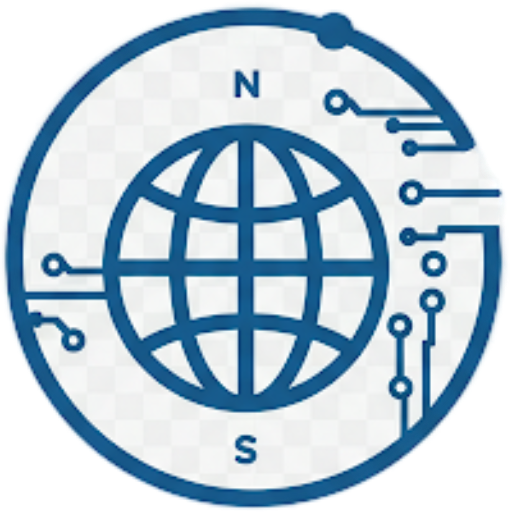The dream of the automated home – lights that greet you, thermostats that learn your schedule, and security systems you can check from anywhere – isn’t science fiction anymore. In 2025, smart home technology is more accessible, powerful, and integrated than ever. Driven by advancements in AI and unifying standards like Matter, creating a truly intelligent living space is within reach.
But where do you start? Setting up a smart home can seem daunting, but with a little planning, it’s a manageable and rewarding project. Let’s break down the steps to build your own smart home setup in 2025.
Step 1: Define Your “Why” (and How Much)
Before buying a single gadget, ask yourself: What do you want your smart home to do?
- Convenience? Automatically turning lights on/off, controlling entertainment with your voice, keyless entry?
- Energy Efficiency? Optimizing heating/cooling, turning off power-hungry devices when not in use, integrating with solar panels?
- Security & Peace of Mind? Remote monitoring via cameras, smart locks, smoke/CO detectors, automated lighting when you’re away?
- Just dipping your toes? Maybe start with a few smart bulbs or plugs.
Clearly defining your goals helps you prioritize purchases and choose the right technology. Equally important is setting a budget. Smart homes are scalable – you don’t need to buy everything at once! Start with devices that address your main goals and gradually expand. Remember to factor in potential subscription costs for some services (like advanced camera features).
Step 2: Choose Your Brain – The Ecosystem
Your smart home needs a central platform to manage devices and automations. The main players in 2025 remain:
- Amazon Alexa: Wide device compatibility, affordable Echo speakers/displays act as hubs. Strong voice control.
- Google Home: Intelligent Google Assistant, versatile Nest devices (speakers, hubs, thermostats), good integration with Android.
- Apple HomeKit: Strong focus on privacy and security, seamless integration for Apple users (iPhone, iPad, Apple TV, HomePod). Requires an Apple device like a HomePod mini or Apple TV 4K to act as a hub.
- Samsung SmartThings: A versatile platform supporting various protocols, often via the Aeotec SmartThings Hub. Works well with Samsung devices but integrates broadly.
- Home Assistant: A powerful, open-source DIY option for tech enthusiasts. Offers maximum customization and local control, often run on a Raspberry Pi with Zigbee/Z-Wave dongles.
What about Matter? Matter is the industry standard designed to make devices from different brands work together seamlessly. While its adoption is growing significantly in 2025, and many new devices support it, it’s not quite the perfect universal translator yet. You’ll still generally choose one primary ecosystem (like Alexa, Google, or Apple) to act as your main controller and app interface. Look for the Matter logo on devices for better future-proofing and interoperability, but always double-check if it specifically works with your chosen primary platform.
Step 3: The Heartbeat – Hubs & Networks
Devices communicate via wireless protocols. Besides Wi-Fi, common ones are:
- Zigbee & Z-Wave: Low-power mesh networks often used for lights, sensors, and locks. They usually require a dedicated hub (like SmartThings, Hubitat, or a USB stick for Home Assistant).
- Thread: A newer low-power mesh network specifically designed for smart homes, offering reliability and efficiency. It’s a core part of the Matter standard. Thread devices often require a Thread Border Router to connect to your home network – fortunately, this capability is built into many newer Wi-Fi routers and smart speakers/hubs from Apple, Google, and Amazon (e.g., HomePod mini, Nest Hub, newer Echos, Eero routers).
Choose a hub (or rely on your smart speaker/display) that supports the protocols your desired devices use. Many modern hubs (like the Aeotec SmartThings Hub, Amazon Echo 4th Gen/Show 10, Apple TV 4K 2022) support multiple protocols including Wi-Fi, Zigbee, Thread, and Matter. For pure local control, consider the Hubitat Elevation.
Step 4: Populate Your Palace – Picking Devices
This is the fun part! Based on your goals, start selecting devices. Common categories include:
- Smart Lighting: Bulbs, switches, dimmers (Philips Hue, Eve, Lutron, TP-Link Kasa, Aqara).
- Smart Plugs: Control “dumb” appliances (Eve Energy, TP-Link Kasa, WiZ). Look for energy monitoring features!
- Smart Thermostats: Learn schedules, adjust remotely, save energy (Ecobee, Google Nest, Amazon Smart Thermostat).
- Smart Security: Cameras (Arlo, Eufy, Reolink, Nest Cam), video doorbells (Ring, Arlo, Google Nest), smart locks (Ultraloq, Schlage, Nuki, Aqara), sensors (motion, door/window).
- Smart Speakers & Displays: For voice control and visual feedback (Amazon Echo series, Google Nest series, Apple HomePod series).
Again, prioritize Matter-certified devices where possible, but verify compatibility with your chosen ecosystem.
Step 5: Bringing it to Life – Setup & Configuration
Generally, the process looks like this:
- Set up your Hub/Controller: Follow the manufacturer’s app instructions (Alexa app, Google Home app, Apple Home app, SmartThings app, etc.).
- Add Devices: Add devices one by one through the app. Matter devices often simplify this with a QR code scan.
- Name Sensibly: Use clear, intuitive names like “Living Room Lamp” or “Kitchen Plug” instead of generic defaults. This makes voice control much easier.
- Assign Rooms: Organize devices by room in the app.
- Test: Ensure you can control each device via the app and voice commands.
Step 6: The Magic – Automations & Scenes
This is where your smart home truly shines. Use your ecosystem’s app to create:
- Routines/Automations: If-This-Then-That rules. Example: “If motion is detected in the hallway after 10 PM, turn on the hallway light to 30%.” or “If the front door unlocks, turn on the entryway light.”
- Scenes: Group actions triggered by a single command. Example: “Good Morning” scene could turn on bedroom lights slowly, raise the thermostat, start the coffee maker (via a smart plug), and announce the weather.
- Geofencing: Trigger actions based on your phone’s location. Example: “When I leave home, turn off all lights, lower thermostat, and lock the front door.”
In 2025, AI plays a bigger role here. Systems are getting better at learning your routines and proactively making adjustments – dimming lights as bedtime approaches, optimizing the thermostat based on weather forecasts and your patterns, or identifying unusual activity on security cameras.
Step 7: Fort Knox – Security & Privacy
Connecting devices to the internet introduces risks. Prioritize security:
- Strong, Unique Passwords: For your Wi-Fi network and all smart home accounts. Use a password manager.
- Two-Factor Authentication (2FA): Enable it wherever possible.
- Software Updates: Keep your hub, devices, and apps updated to patch vulnerabilities.
- Secure Wi-Fi: Use WPA3 encryption if your router supports it, or WPA2 as a minimum. Consider a separate guest network for visitors.
- Privacy Policies: Understand how manufacturers use your data. Platforms like Apple HomeKit emphasize local processing and encryption. Be mindful of microphone and camera placements.
The Future is Now (and Next)
Smart home tech in 2025 is smarter, more predictive, and increasingly focused on sustainability. Expect AI to become even more integrated, Matter support to mature further, and new device categories to emerge. Your smart home is an evolving ecosystem that can grow with your needs and budget.
Ready to start building? Begin with your goals, choose your platform wisely, and add devices thoughtfully. Welcome to a smarter, more convenient, and efficient home!


